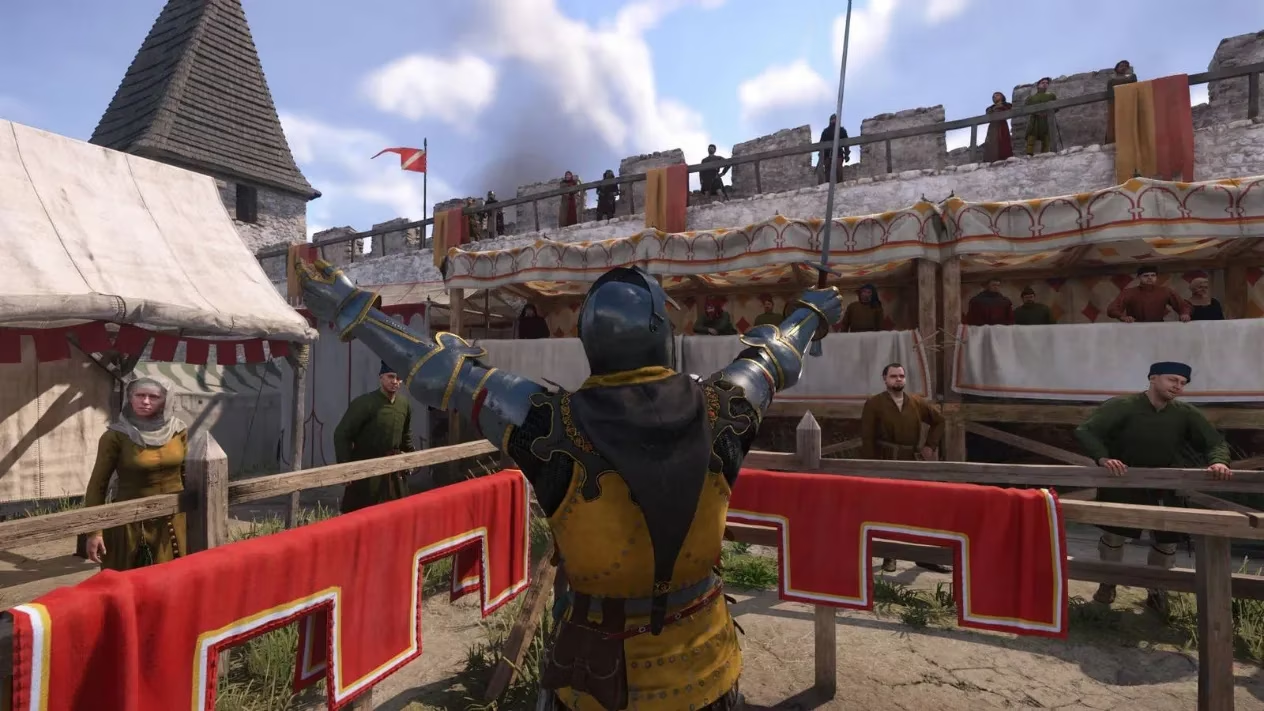The Art of Sword Combat in Modern Open-World Games
Experience thrilling sword combat in open-world games like Elden Ring and Ghost of Tsushima, blending artistry, strategy, and immersive realism for epic battles.

Sword combat remains the beating heart of medieval and fantasy open-world games in 2025, blending raw excitement with intricate skill expression. While some titles settle for basic slash-and-block mechanics, others elevate blade clashes into high-stakes duels where timing, combos, and strategy separate victory from defeat. The thrill isn't just about realism—it's about how games like Elden Ring or Ghost of Tsushima transform swordplay into an art form, whether through historically accurate directional systems or fantastical aerial flips. What makes these virtual battles so endlessly captivating? For starters, they offer a visceral connection to eras long past while allowing players to rewrite history with every parry and thrust. The evolution of combat systems has turned swords from mere tools into extensions of the player's will, demanding precision against armored knights or supernatural beasts alike. And as technology advances, the gap between cinematic spectacle and interactive depth narrows, making every swordfight feel like a personalized epic.
⚔️ Elden Ring: Precision in Every Swing
Elden Ring challenges players with methodical, weighty combat that rewards patience and mastery. Forget button-mashing—here, colossal swords demand deliberate timing between boss attacks, while katanas unleash frenetic flourishes when imbued with Ashes of War abilities. Parrying isn’t optional; it’s essential for survival against lethal enemies who mirror the player’s own tactics. The open world allows grinding to ease difficulty, but true triumph comes from learning enemy patterns. Why does this resonate? Because every duel feels earned, blending tension with triumph.
🧙♂️ The Witcher 3: Dance of Steel and Silver
Geralt of Rivia’s swordplay is pure elegance, turning combat into a lethal ballet. With steel for humans and silver for monsters, his moveset—unlocked progressively—features spins, sweeps, and counters that flow like choreography. Alchemy and magic add layers; fighting bandits feels starkly different from battling wraiths, especially on adjustable difficulties. Imagine deflecting arrows before twirling into a decapitating strike—it’s accessible yet deeply satisfying, proving simplicity doesn’t sacrifice depth.
🗡️ Ghost of Tsushima: Elegance Meets Ferocity
Set in feudal Japan, this game swaps European broadswords for katanas, delivering lightning-fast duels against Mongol invaders. Combat balances beauty and brutality: drawing a blade hip-to-slice in half a second, rolling through mud, or spinning past defenses. It’s not pure realism, but the responsiveness creates a dance where every kill feels cinematic. How does it stand out? By making reaction speed as vital as strategy, immersing players in samurai honor.
🏰 Kingdom Come: Deliverance 2: History in Your Hands
For realism seekers, this sequel perfects medieval authenticity. Swords clang uselessly against armor unless you exploit gaps in defenses via a directional stance system. Training is mandatory—Henry improves only through arena drills and guild quests like 'Ars Dimicatoria', which unlock real manuscript-based combos. First-person perspective intensifies every block and counter; you can’t solo armies, making each skirmish a tense test of skill. It’s immersive, unforgiving, and deeply rewarding.
⚔️ Mount & Blade 2: Bannerlord: Chaos of the Battlefield
This sandbox epic simulates medieval warfare at scale, letting players lead armies as mercenaries or lords. Sword combat shines in sieges or duels, requiring directional blocking (four angles) and attacking to outmaneuver foes. Fights feel chaotic yet strategic, playable in first or third person. Why replay it? Because no two battles are alike—clashing steel amid hundreds of soldiers creates emergent stories.
🌸 Rise of the Ronin: Flash Meets Function
Mid-1800s Japan provides a unique backdrop for over-the-top combat. Katanas unleash screen-crossing dashes, mid-air flips, and combo chains that prioritize style alongside substance. Secondary weapons add variety, while visual effects amplify every slash. Is it realistic? No—but it’s a joyful celebration of movement, proving historical settings can embrace fantasy flair.
❓ People Also Ask
-
What makes sword combat satisfying in open-world games? It merges skill mastery with immersive storytelling—landing a perfect parry against a boss after repeated failures creates unforgettable moments.
-
Which game offers the most realistic sword physics? Kingdom Come: Deliverance 2 leads with its armor-based directional system, demanding real-world techniques.
-
Can beginners enjoy these games? Absolutely! Titles like The Witcher 3 include adjustable difficulties, easing players into complexity.
-
How do magic or abilities enhance swordplay? Elden Ring’s Ashes of War or Geralt’s signs add tactical layers, letting players customize their combat rhythm.
🔮 Future Outlook: The Blade's Evolution
Looking ahead, sword combat could blend AI-driven adaptability with VR physicality. Imagine duels where enemies learn your patterns mid-fight, or haptic feedback makes blocking a heavy blow vibrate through your bones. Personally, I dream of games that fuse Rise of the Ronin’s acrobatics with Kingdom Come’s realism—fluid yet weighty, where every battle tells a story. Will developers dare to innovate? If 2025’s titles teach us anything, it’s that the sword remains gaming’s most versatile storyteller.
